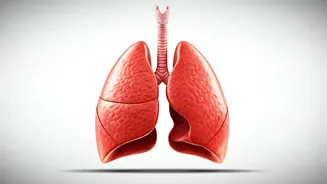Understanding Asthma Basics
Asthma, a chronic respiratory disease, is characterized by inflammation and narrowing of the airways, leading to breathing difficulties. Various triggers,
such as allergens, irritants, and even exercise, can set off these symptoms. The primary feature of asthma involves the obstruction of airflow, making it hard to inhale and exhale effectively. This obstruction can cause symptoms like wheezing, coughing, shortness of breath, and chest tightness. Understanding these underlying mechanisms is crucial for managing asthma effectively. Regular monitoring of symptoms and adherence to a treatment plan are essential for controlling asthma and maintaining a good quality of life. This includes recognizing triggers, using medications as prescribed, and, crucially, incorporating breathing exercises into a daily routine. These exercises can significantly improve lung capacity and reduce the severity of asthma attacks.
Diaphragmatic Breathing Explained
Diaphragmatic breathing, also known as belly breathing, is a cornerstone technique for asthma management. This method involves using the diaphragm, a large muscle at the base of your lungs, to breathe deeply and efficiently. To practice this, lie on your back or sit comfortably. Place one hand on your chest and the other on your abdomen. As you inhale slowly through your nose, focus on pushing your abdomen outwards, ensuring your chest remains relatively still. You should feel the hand on your abdomen rise as your diaphragm contracts. Exhale slowly through pursed lips, allowing your abdomen to fall back down. This controlled breathing helps to fully inflate the lungs and promote better oxygen exchange, thereby reducing asthma symptoms. Practicing diaphragmatic breathing regularly can increase lung capacity and reduce reliance on rescue medications. Aim for 5-10 minutes of practice several times a day to start seeing benefits. Over time, this technique becomes more natural, assisting in managing asthma symptoms more effectively during daily activities and during asthma attacks.
Pursed-Lip Breathing Techniques
Pursed-lip breathing is another useful technique, especially during an asthma flare-up. This method helps to slow down your breathing rate and keep your airways open longer, thus easing breathing. To perform this, relax your neck and shoulder muscles. Breathe in slowly and deeply through your nose. Then, purse your lips as if you're about to whistle and breathe out slowly through your pursed lips, taking twice as long to exhale as you did to inhale. This extended exhalation creates back pressure that keeps the airways open for a longer duration, preventing air trapping within the lungs. This, in turn, can significantly reduce shortness of breath and wheezing. Practice pursed-lip breathing regularly so that you can use it effectively during an asthma attack or when you feel breathless. It is a simple yet potent tool for managing asthma symptoms in a calm and controlled manner. With practice, you'll find that it becomes easier to manage the onset of breathing difficulties.
Breath Control Exercises
Breath control exercises involve techniques such as controlled breathing. These exercises focus on regulating the rate and depth of breathing to manage asthma symptoms. One example is the 4-7-8 breathing technique, where you inhale for a count of four, hold your breath for a count of seven, and exhale for a count of eight. These timed breathing patterns can help reduce stress and anxiety, which can often worsen asthma. Another important aspect of breath control exercises is recognizing and responding to early signs of asthma attacks. By practicing these techniques, individuals can learn to better manage their breath and control asthma symptoms. In addition to the mentioned techniques, consider exploring other forms of breathwork, such as Buteyko breathing, to learn more advanced methods for managing breathing patterns. Regular practice of breath control exercises improves lung function and helps to alleviate symptoms during an attack or during daily activities.
Tips for Successful Practice
Consistency is key when it comes to practicing breathing exercises for asthma. Try to incorporate these exercises into your daily routine, perhaps setting aside specific times each day to practice. Finding a quiet, comfortable space where you feel relaxed can also enhance the effectiveness of the exercises. It’s also crucial to coordinate these exercises with your medications. Always follow your doctor's instructions for asthma treatment and use breathing exercises as a complementary method, not a replacement for prescribed medications. Keep track of your progress by noting any changes in your breathing or symptoms. This monitoring can help identify what techniques work best and allow you to adjust your routine as needed. Moreover, seek guidance from a respiratory therapist or healthcare provider to ensure you are performing the exercises correctly and receive personalized advice tailored to your asthma needs. Regular practice, coupled with medical guidance, will help you manage asthma and improve your overall well-being.











